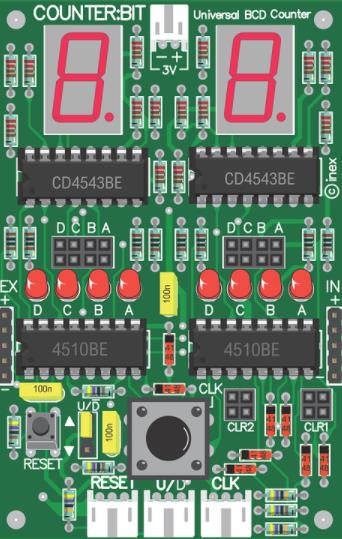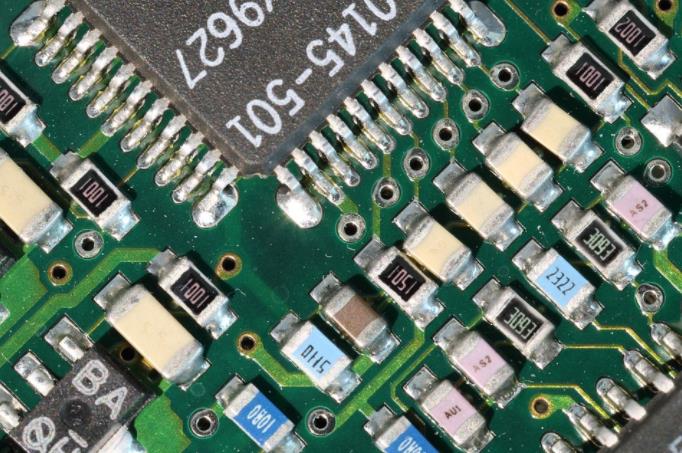Contact
Write to Us And We Would Be Happy to Advise You.
Do you have any questions, or would you like to speak directly with a representative?
By ren
The term "Design for Manufacturing and Assembly" refers to a set of rules to ensure that a product is intended to be simple to make and assemble. Prefabrication is not a new concept; it has been utilized in aeronautics and the automobile industry for decades. However, combining DFMA with MMC on large-scale construction projects is relatively new.
With novel techniques such as Building Information Modelling (BIM) and related technology, a holistic approach using design for manufacturing and assembly is gaining traction. BIM simplifies the mechanical design of prefabricated systems and makes them possible to use in both small and large-scale construction projects. A perfect guide for those who want to know that how to improve PCB assembly process.

The advantages of design for manufacturing and assembly include the following:
There's no doubting that design for manufacturing and assembly deployment necessitates earlier involvement of design and construction parties. Although this may appear to increase upfront costs, it has been proven that ultimate project material cost will be lower due to increased collaboration, reduced delays, and fewer change orders, claims, and information requests. Design standardization, production techniques, a regulated environment, and manufacturing aids like automation, among other things, all help to speed up the construction process.
Because the production process is more controlled and stable, onsite and assembly procedures are minimized, safety is improved, and the Accident Frequency Rate (AFR) is considerably lowered.
When DFMA is applied from the start, with cross-functional teams working together to optimize the design for waste reduction, efficiency, labor reduction, and program reduction, the best outcomes are achieved (schedule).
At an early stage of construction, superior quality finishes are achieved, and faults are avoided. Reliability improves due to fewer components, assembly steps, and the requirement for surplus resources onsite, resulting in lower transportation costs.
Increased predictability and reduced uncertainty due to external factors such as weather, absenteeism, accidents, and better logistics and onsite installation minimize lead times.
Users can combine and test models to identify potential dangers or inaccuracies. Clash detection reports can be created if specific elements, such as ductwork or services are routed through beams. It permits the issue to be addressed early when it is less expensive.
Here are its three principles.
When there are fewer parts, everyone benefits:
Why reinvent the wheel when you can use the same best practices that have previously been established for other products?
Using the same parts, hardware, and raw materials as much as feasible is what standardization entails. It also entails repurposing designs for a variety of items. As a result, engineering is simplified to avoid starting over or from scratch every time a transaction is completed.
The use of standards allows for a quick and effective response to a client's request.
Limiting variance also means lowering inventory, reducing the number at each workstation, and lowering the chance of errors. Standardization should be enforced across the board and applied to all of the company's goods.
Parts created as part of a design for manufacturing and assembly program should be simple; there should be only one way to install them and only one area where they fit, reducing manufacturing processes errors to a minimum.
A USB key is an excellent example of a non-optimized product; it is not natural to know which way it should be inserted in the computer port; we insert it upside down more than half of the time!

It has the following benefits.
Engineering teams are frequently required to cut production and manufacturing costs for the company to become more competitive. Designers are unaware of the influence of their changes on actual production because they lack a thorough understanding of commonly used manufacturing procedures and close relationships with the manufacturing site, and a focus on material costs. The engineering team listens to the problems that production staff are having and works with them to rethink problem parts/sub-assemblies as part of a DFMA project.
Because of the reverse engineering team's lack of time for product innovation, which has become the organization's bottleneck, DFMA allows the wall separating the engineering and production teams to be broken down. The project is an excellent opportunity for all parties to take the time to have an open conversation about generating a product that meets everyone's expectations.
Employees can be involved in a design for manufacturing and assembly projects by allowing them to talk freely, listen, and address problems they confront regularly. When the new version is made, and employees realize how simple it is to put the product together, problems with other items will become as apparent as a neon sign.
A functional tree diagram allows you to match each part to the function that the product should fulfill. These functionalities make the optimization workshop go more smoothly and ensure that we stay focused on the client's requirements.
During the optimization workshop, all issues causing a problem must be resolved.
Representatives from each department, one of whom is in charge of ensuring that the client's needs are addressed, are gathered in the same room as equals. A cross-functional team brainstorms concepts and designs for resolving challenges and improving the product during the workshop.
With multiple alternative options for each issue, the engineering team joins the discussion and develops prototypes that will be revalidated with the DFMA team.
By involving the same people throughout creating the new version of the product, the time to market can be reduced. You ensure that any essential adjustments are caught before manufacturing begins when you submit designs.
For DFMA, there are different intensive methodologies and apparatuses. We'll focus on the fundamental standards of these strategies here:
Plan and assemble groups to work together on projects. Promoting or deals (characterizing of essential particulars), designing, buying, creation cycles, quality, and even coordinated factors groups (strategic limitations) or client service groups should be engaged with this interaction.
An upstream assignment; starts during the advertising stage, which could require months or even a very long time before the item is prepared for assembling.
Input on merchandise that is, as of now, underway is a decent method for getting some training. It isn't just an issue of creation groups being associated with R&D but also of R&D groups coming into creation to see with their own eyes.
1. Diminished development time and labor prerequisites most of the development is finished off-site, diminishing development time and labor supply necessities on location.
2. Better artistry - Workmanship has moved along due to strict quality control in industrial construction facilities.
3. Less interference to the area - Because less development work is done nearby, there is less burden on the local site.
Read more: What is PCB assembly process?
Contingent upon the circumstance, utilizing modules gives various benefits:
Lessen the all-out number of pieces or parts. If an item has different varieties (every one of which might vary by a module) or, on the other hand, assuming numerous products utilize a similar module, this is the situation. Subsequently, the related circuitous costs are decreased (authoritative and calculated)
1. Get a good deal on planning and testing by reusing existing modules instead of buying new ones.
2. Use creation scale impacts for modules shared by different areas.
Particularity, then again, is compelled by the chance of higher get-together expenses as more associations are added.
A multifunctional part diminishes the available number of features since it eliminates the necessity for two components to fill two roles. A hotness dissipater, for instance, can likewise be utilized as a separator.
It is the most notable DFMA switch, also called the Poka-Yoke. It involves making components that can't be placed together or on top of different things.
A few pieces can be made to make gathering and testing simpler. A section, for instance, can fill in as a get-together aide or be intelligent to help examination notwithstanding its "item" job.
It is simply a quick overview of design for manufacturing and assembly and some of the excellent outcomes obtained when used effectively in the construction industry. Please get in touch with us if you need assistance integrating DFMA or guidance on how to begin using MMC and lean manufacturing operations.
We hope this article will help you learn DFMA principles, design process, assembly process, quality control, and product manufacturing process product development process, assembly methodology, early design phases, assembly line, and assembly operations, product family, design solutions.
Do you have any questions, or would you like to speak directly with a representative?